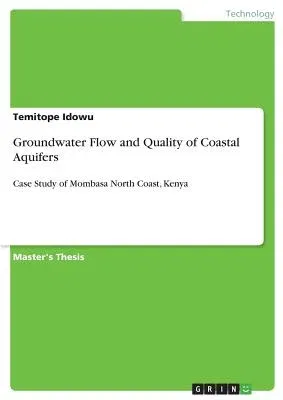Master's Thesis from the year 2017 in the subject Engineering - Civil
Engineering, grade: 80.00, course: Civil Engineering (Environmental and
ASAL Option), language: English, abstract: Groundwater is the world's
most readily available source of freshwater, hence the importance of
aquifers. However, groundwater resources are prone to pollution in the
wake of anthropogenic influences, over-exploitation and climate change
related activities. Coastal aquifers are faced with added unique
challenges of seawater intrusion. The coastal aquifer of Mombasa, home
to East Africa's busiest seaport is not an exception to these
challenges. This study investigated the groundwater flow, quality and
vulnerability to seawater intrusion of the coastal aquifer of Mombasa
North Coast. This is a 74.2 km2 region bounded by the Indian Ocean on
the East, by creeks on the North and South and high elevated hills on
the West. The hydrogeological characteristics, salinity and extent of
seawater intrusion of the aquifer were assessed using statistical and
geospatial methods. The statistical methods include correlation
coefficients, cross plots and Piper plots. GALDIT overlay index was
applied in assessing the vulnerability of the aquifer while groundwater
flow and solute transport were simulated with the aid of MODFLOW, MT3D
and SEAWAT packages. Field data such as static groundwater levels and
water quality parameters were collected at pre-monsoon, rainy season,
and post-monsoon of 2016. This was followed by laboratory analysis for
Na, K, Mg, Ca, Cl, HCO3 and SO4 concentrations in the obtained water
samples. The results show the aquifer is shallow and unconfined with
groundwater heads ranging from -1 to 33m above mean sea level. The EC
and TDS values showed near perfect correlation relationships and were
generally high, as over 94% of the water samples exceeded WHO drinking
water limit. The groundwater pH was slightly alkaline but could be
slightly acidic in the rainy season due to groundwater


